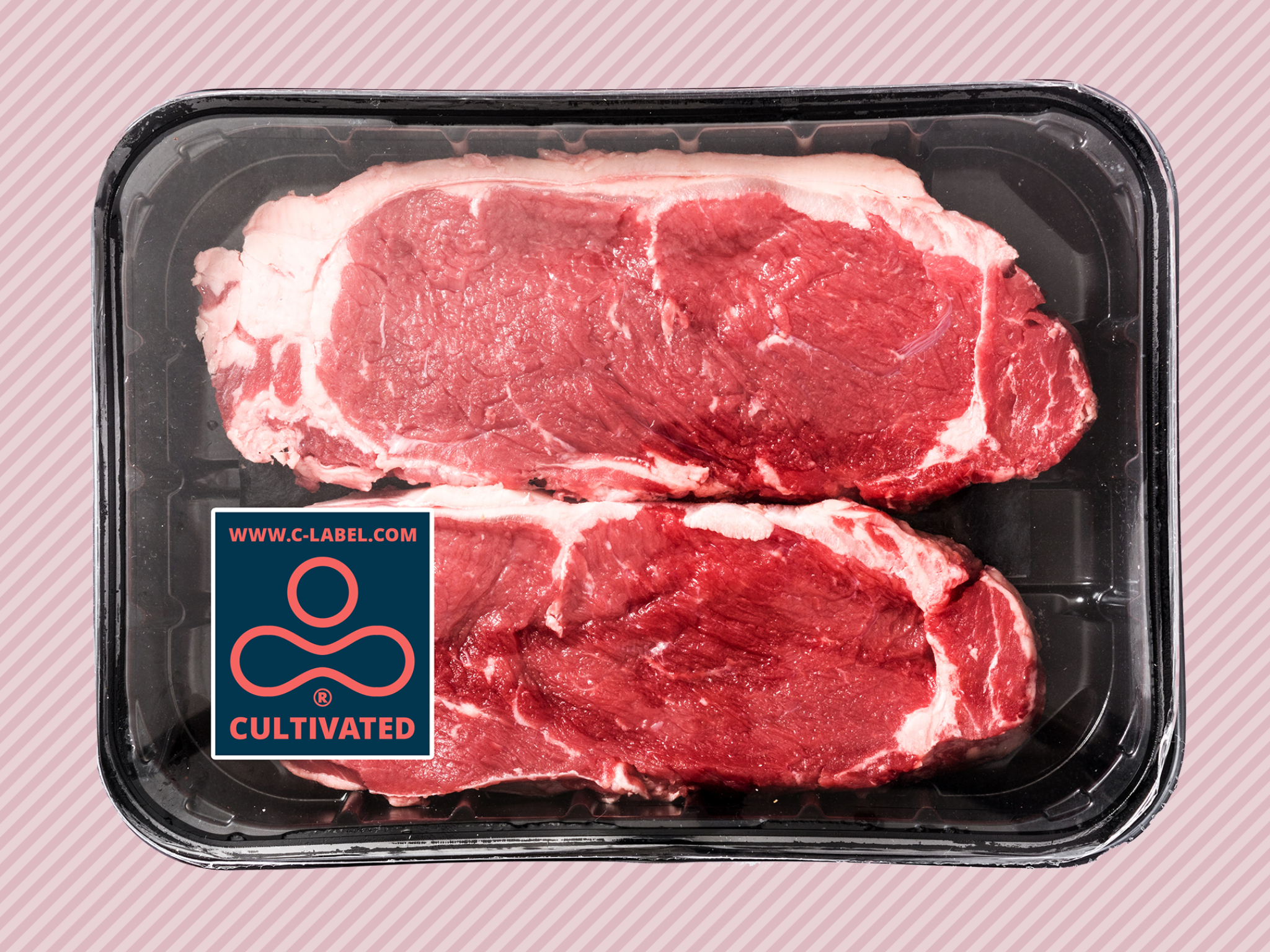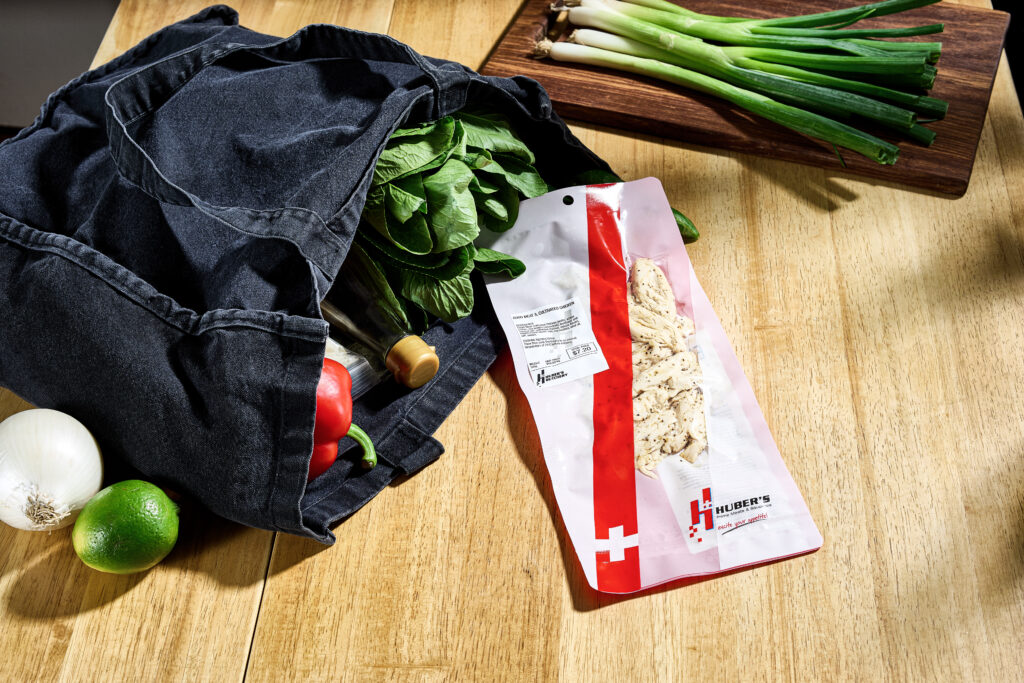
The use of terms like ‘beef’ or ‘salmon’ on cultivated meat packaging labels helps, rather than hinders, consumer understanding, particularly with allergenicity.
Four in five Europeans are able to differentiate cultivated meat from conventional versions when presented with a front-of-pack label that uses ‘meaty’ terms, new research has shown.
While the labelling debate has been a major talking point for plant-based meat in Europe over the last decade, the emergence of cultivated meat has sparked similar discourse.
Some EU policymakers have cited consumer confusion as a reason to restrict how cultivated meat products are marketed, or whether they should even be sold.
However, research shows that European citizens are far from confused. A survey by the Good Food Institute (GFI) Europe, a future food think tank, last year showed that a majority of consumers are happy for cultivated proteins to use terms like ‘beef’ and ‘chicken’, as long as it’s made clear that they aren’t a product of livestock farming. The sentiment was particularly strong in Spain (81%), Portugal, Hungary, Czechia and Greece (all 79%).
Adding to that is new research from GFI Europe and Opinium, which analysed the impact of on-pack nomenclature and descriptors related to these foods on 2,000 respondents in France, Germany, Spain, Switzerland and the UK.
They found that in all these markets, consumers are more likely to confuse cultivated meat with plant-based proteins when presented with an on-pack label and image, with only two-thirds able to differentiate the two. According to Seth Roberts, senior policy manager at GFI Europe, that “reinforces the need” for cultivated proteins to be able to use meaty terms to “ensure consumer understanding, and therefore safety”.
Consumers prefer ‘cultivated’ meat, not ‘artificial’

One key factor driving this argument is allergenicity. If people with seafood allergies are unable to discern between cultivated and plant-based salmon, they’re at risk of consuming a product that could cause an allergic reaction.
The research tested four names for cultivated meat – cultivated, cell-cultivated, cultured and artificial – as well as three descriptors: ‘made without farming animals’, ‘made from cellular agriculture’, and ‘made from synthetic protein’.
Terms that are seen as negative, like ‘artificial’ and ‘made from synthetic protein’ were the least helpful for identifying allergy risks, with only 32% of respondents doing so – much lower than the efficacy of ‘cultivated’ (55%) and ‘cultured’ (58%) meat labels. In addition, the negative terms were rated as “too technical”, “misleading” and “unappetising”.
This leads to a “strong consumer safety justification” for regulators to avoid mandating the use of such terms for cultivated meat, Roberts said, further pointing to concerns that these are inaccurate descriptors for the large-scale production of these proteins.
The research further found that ‘cultivated’ and ‘cell-cultivated’ were the clearest qualifiers across Europe, and ‘made from cellular agriculture’ the most appropriate descriptor.
These findings chime with previous research. In 2022, a peer-reviewed study found ‘lab-grown’ and ‘artificial meat’ to be the least favourable terms among consumers, and ‘cell-cultured’ and ‘cell-cultivated’ the most popular. A year earlier, in a GFI survey of 44 industry CEOs, 75% preferred ‘cultivated’ too.
GFI Europe pointed to a “variation in preferences” in the survey, suggesting that it may not be appropriate for regulators to mandate certain terms for cultivated meat, but instead set a range of options that producers can use as they commercialise.
One suitable approach could be inspired by Singapore, whose regulator doesn’t necessitate the use of any specific terms; it has instead introduced conditions to use “suitable” qualifiers that don’t mislead or confuse consumers.
Cultivated meat labelling under spotlight ahead of EU regulatory approval

In any case, Europeans still remain unsure of how cultivated meat is produced, and this affects their understanding of these proteins. That highlights the need for industry players to support consumer education via transparency about their manufacturing methods. For regulators, working with the sector on preferred terms while engaging with the public could be an important tool.
“We encourage industry and regulatory agencies in Europe and overseas to proactively engage on these topics, sharing resources, insights and perspectives to strengthen consumer understanding of what cultivated meat products are and how they are made,” remarked Roberts.
One industry-led solution to clear confusion has come from Swiss certification body V-Label, which established the C-Label for cell-cultured foods in January. The organisation’s founder, Renato Pichler, told Green Queen that the market for these products is developing “very quickly”, and the accreditation helps “increase the transparency of the whole cultured sector”.
“As we move closer and closer towards a world where cultivated meat will become the norm, certification such as the C-Label will be increasingly necessary for consumer confidence in this new and revolutionary product,” added Owen Ensor, co-founder and CEO of Meatly, Europe’s first company to be approved to sell cultivated meat (for pet food), and the first user of the C-Label.
Regulatory clearance for human food applications is still at least a year away in the EU, with France’s Gourmey leading the race. Setting labelling standards in advance to aid consumer understanding upon cultivated meat’s arrival on the market is crucial.
Talk about alternative protein labelling continues to envelop Europe. After the region’s top court rejected France’s latest attempt to ban the use of meat-like terms on plant-based products (a decision replicated by France’s highest court), legislators at the Agrifish Council reignited the effort last week.
“This would not only go against the goals of simplification, competitiveness and innovation, but also raises the question of political priorities,” said Rafael Pinto, senior policy manager at the European Vegetarian Union. “While the world is facing wars, economic and humanitarian crisis, as well as an innovation race, our ministers are discussing ‘what is a burger’.”
The post ‘Meaty’ Names on Cultivated Protein Packaging Don’t Cause Confusion, Finds Study appeared first on Green Queen.
This post was originally published on Green Queen.